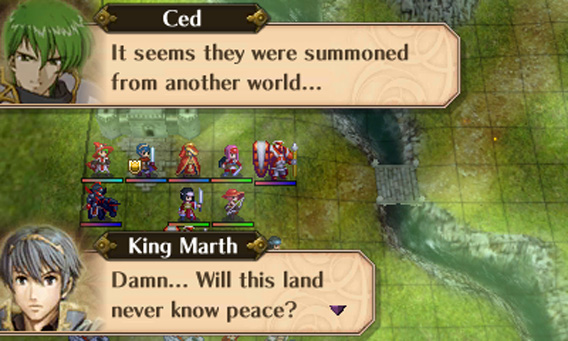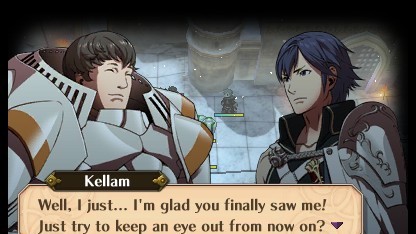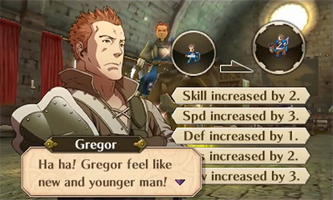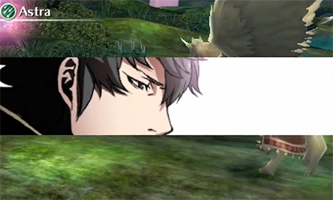Fire Emblem: Awakening
With the Fire Emblem series’ decline in the DS era, Nintendo had informed Intelligent Systems that if its next game didn’t sell at least half a million copies, the IP would be shelved for the foreseeable future. With this in mind, the developer sought to make Awakening the ultimate culmination of Fire Emblem, putting in many callbacks to the franchise and bringing in new mechanics and features, as well as upgrading or altering old ones. Intelligent Systems’ end result fell short of perfection, but it was enough to make Awakening a runaway success and give the series a new lease on life.
Fire Emblem: Awakening takes place in Archanea, the same continent as the first three games in the series, albeit two thousand years after Mystery of the Emblem. It was an interesting, if understandable choice to have the first original Fire Emblem game since 2007 take place on the same continent as the previous remakes. The Archanea games are a fan favorite, at least among Japanese Fire Emblem players and it makes some poetic sense to have the ultimate culmination and possible last entry take place where it all began. To further tie Awakening into the first few games, the royal family of Ylisse is stated to be descended from Marth, now called the Hero-King. The game’s main lord Chrom, as well as his daughter from the future Lucina, wield Marth’s legendary blade Falchion. As a massive connection to Gaiden/Shadows of Valentia, part-way through the game the army travels to Valm, which was a continent once called Valentia and presumably underwent the same unexplained name change that Archanea/Ylisse did. A smaller connection is made to Genealogy of the Holy War and Thracia 776 in the form of the Brand of the Exalt. This marking found on Ylissean royals, and its origin in the first exalt having made a pact with the Divine Dragon Naga, is very similar to the blood pacts several historical figures made with dragons in those games’ backstory. Though only alluded to, something similar likely happened to the Avatar’s ancestors and the Fell Dragon Grima. That’s not even mentioning the numerous smaller callbacks and references to the earliest games in the series.
Connections to the other games in the series mostly come in the form of weapons, bonus units called Einherjar that barely resemble their namesakes, many references made by Owain, and DLC maps. One special unit, a Hero by the name of Priam, is stated to be the descendant of Ike from Path of Radiance and Radiant Dawn, who had come to Ylisse from another world. Awakening strongly implies that Tellius exists in a parallel universe to Archaena/Ylisse’s world, and it can be inferred that the other continents exist in the same multiverse. This strong implication that the Fire Emblem games are actually part of the same greater metaverse is rather startling and a bit unexpected (some might even argue that it’s ham-fisted). The tying together of the “original Fire Emblem universe” to the rest of the games in the series further cements Awakening as the ultimate culmination.
Aside from the game’s story and lore, many gameplay features were brought back from earlier games in the series. An overworld map that can be freely traversed across first showed up in Fire Emblem Gaiden, then vanished until The Sacred Stones. A feature that the developers were especially eager to bring back is the marriage and second-generation systems from Genealogy of the Holy War. In Awakening, this allows playable units to get married, though the potential pool of suitors is smaller for some than for others. After about halfway through the game, the pair’s child (or children if one of the parents is Chrom or male Robin/Avatar) appear in a special side chapter and can be recruited if the Paralogue chapter is completed. The child inherits the parents’ stats and classes and can usually become stronger than the first generation.
The way to get characters to fall in love involves another long-time feature of the series, support conversations. Supports allow two units to give each other stat bonuses in battle. The Binding Blade, was the first game to introduce support conversations, although a version of supports has existed in the series since Genealogy. Supports not only allow units to grant stat bonuses when they fight near each other, they provide short scenes that aid greatly in fleshing out characters who may never appear in the main story again. In previous games these support ranks increase from C to A, but Awakening adds in S rank, in which two characters of the opposite sex get married. Supports can be built by having them fight near each other, fight while Paired-up (more on that later), heal or dance for the other, perform Dual Guards and Dual Strikes, and more.
After support conversations were notably absent from Radiant Dawn and Shadow Dragon (and westerners missed out on New Mystery of the Emblem, which did have them), Fire Emblem fans rejoiced at their triumphant return. Awakening was also the first time supports were unlimited, since in previous games, characters were restricted by how many could be made in one playthrough. It helped greatly that 8-4 Ltd. did a stellar job localizing the game, making support conversations a joy to read. Many people also enjoy playing matchmaker with the characters, as several resulting couples and conversations are decently written, if not outright sweet and endearing. The children are largely optional despite the seemingly major element they play in the plot (the only second generation character that is recruited as part of the story is Lucina), but it is heartwarming to have the children talk to their parents.
That’s not to say these systems were used perfectly in Awakening. Due to the nature of supports, many marriages seem rushed story-wise. The second generation can almost be regarded as an afterthought and it could be difficult to use them if players didn’t level them up. Since the fathers are interchangeable, the support conversations the children have with their dads are almost entirely identical to each other. It is understandable why they could not more individualized, but it still seems like a missed opportunity. Even so, the supports combined with marriage and family systems proved to be a huge hit with players, whether it brought out their inner shipper or inner min-maxer. They are a major reason Awakening is as popular as it is.
These may arguably be the biggest returning mechanics, but supports and marriage are not the only ones. The feature that likely brought in the most newcomers to the series is Casual Mode, which originated in the unlocalized New Mystery of the Emblem. Permanent death may be a staple of the series, but it’s one that can frustrate even die-hard fans. It’s aggravating to nearly be done with a map, only to have a character suddenly get killed, forcing the player to either go on without a potentially good unit, or to restart the battle from the beginning. It’s even worse if it’s due to dumb chance, like an enemy getting a critical. While some long-time fans of the Fire Emblem series bemoan Casual Mode, saying it takes away from what make Fire Emblem unique, many gamers who didn’t play the series because they found permanent death draconian gave Awakening a chance and enjoyed it.
The Avatar unit is also one that returns from the unlocalized remake of the third game, a customizable character that plays a significant role in the story and is a stand-in for the player. It can be argued that the Avatar is actually a return of the tactician in Fire Emblem: The Blazing Blade, as this non-playable character is also a stand-in for the player who acts as a strategist. There is even DLC in which a version of Lyn seems to recognize Awakening‘s Avatar as the tactician from her game, though whether this is due to multiverse antics or fourth wall-breaking is left ambiguous. Regardless, Awakening‘s Avatar is a powerful unit with access to the most classes in the game and nearly every skill. While not universally loved, many players enjoyed the Avatar unit, especially with his/her ability to marry almost every playable unit in the game.
The Pair Up mechanic is somewhat new, though it can be considered the evolution of the Rescue command from the Tellius games. This allows two units to act as one, but with enhancements to stats, unlike Rescue. Paired Up units will fight enemies together in a Dual System battle (also achievable if units stand next to each other). The lead character deals damage and takes damage, but the supporting unit has a chance to help the lead by attacking the enemy or blocking a hit. There are virtually no downsides to Pair Up and the mechanic makes battles very easy, especially since enemy units are unable to Pair Up. Even so, Pair Up and the Dual System does make for flashy and exciting-looking bouts, and it becomes essential on harder difficulties.
Another not-quite-first feature that Awakening has is downloadable content. New Mystery began the trend with a few special items and chapters locked to the DS cart unless connected to the Internet, but DLC really took off in this title. There are 25 total DLC episodes, and if a player did want to purchase all of it, it would run them over $50. All of the DLC is a little costly, and even the individual episodes may be a bit much at $2.50-$3 each, but many are excellent. The battle maps tend to be much more nuanced and strategic than the base game’s main story chapters. The Future Past, which are three story-focused maps, has an arguably better plot than that of the main campaign. There are even maps devoted to extra conversations similar to and just as delightful as Awakening‘s support conversations.
Fire Emblem: Awakening reached the number of sales Nintendo demanded and then some, selling nearly two millions copies worldwide. While its success was due in no small part to Nintendo’s marketing of the game (including a TV commercial!) both fans of the series and newcomers were quite enamored with Awakening and its mixture of the old and new. It served as an excellent introduction to the series and veterans enjoyed the many callbacks to the past games and Awakening‘s own systems and characters.
Fire Emblem warranting advertising? Awakening was different.
As the initial fervor died down, Awakening‘s flaws became more apparent. The main story has an awkwardly-rushed pace with mostly flat villains. It had its peak moments, but it could stand to have the trip to Valm mid-way through the game excised to even out the pacing and actually explain Grima’s origin instead of leaving it to a later game. While most of the characters were fleshed out in their support conversations, the writers had a tendency to focus on one or two tropes per character to a greater level than past titles, such as Ricken’s complaints about being treated like a kid, Tharja being a creepy stalker, and Sumia being a klutz. Battles were flashy, but the wide open maps, dearth of win conditions aside from “kill boss” and “rout enemy,” and ability to grind levels easily made combat less strategic and intricate than in previous games. Raising the difficulty just increased the number of enemy, boosted their stats, and gave them broken skills rather than making fights any more nuanced.
While some detractors of Awakening take their objections to absurd levels (the type who cry that it “ruined the series forever”), there is plenty to criticize. Even so, Awakening is a very enjoyable game with wide appeal, and its flaws are not readily apparent. Awakening made gamers wonder how the next entry would play out and how Intelligent Systems would respond to criticism.
Josh’s Response:
Like many RPGamers, Awakening was my introduction to the Fire Emblem series. While I was familiar with the series before this release, the glowing praise for Awakening prompted me to purchase a 3DS and dive in. Since I only played it once when it came out and afterward, rather than revisiting it, I went diving into the Fire Emblem back catalog, I don’t have much to add to Cassandra’s summary.
It’s interesting to see how much of the series is tied together by Awakening. People who follow RPGs at all (or Smash Bros.) will catch the references to the first Fire Emblem with Marth, but all the other references flew right over my head when I played it. Thankfully, it was done in a way that provided a nice nugget for series veterans without distracting new players. It’s also probably a good thing that Awakening was my first experience with the series; considering how I felt about the combat and map design in Birthright, I’ve worried that Awakening‘s wouldn’t hold up. Nonetheless, the punchy support conversations, marriage, and overall excellent localization by 8-4 Ltd. were what really elevated the experience above other strategy RPGs. While the conversations are not that long, they bonded me to the characters.
Awakening is the Goldilocks of Fire Emblem. Plenty of other entries in the series do individual elements better (story, characters, combat), but Awakening does all of them capably and creates a “just right” experience. While it may be a bit simple and straightforward for series veterans, it’s easy to see why this is the best-selling game in the series and it remains the perfect starting place for people new to the series.










Recent Comments